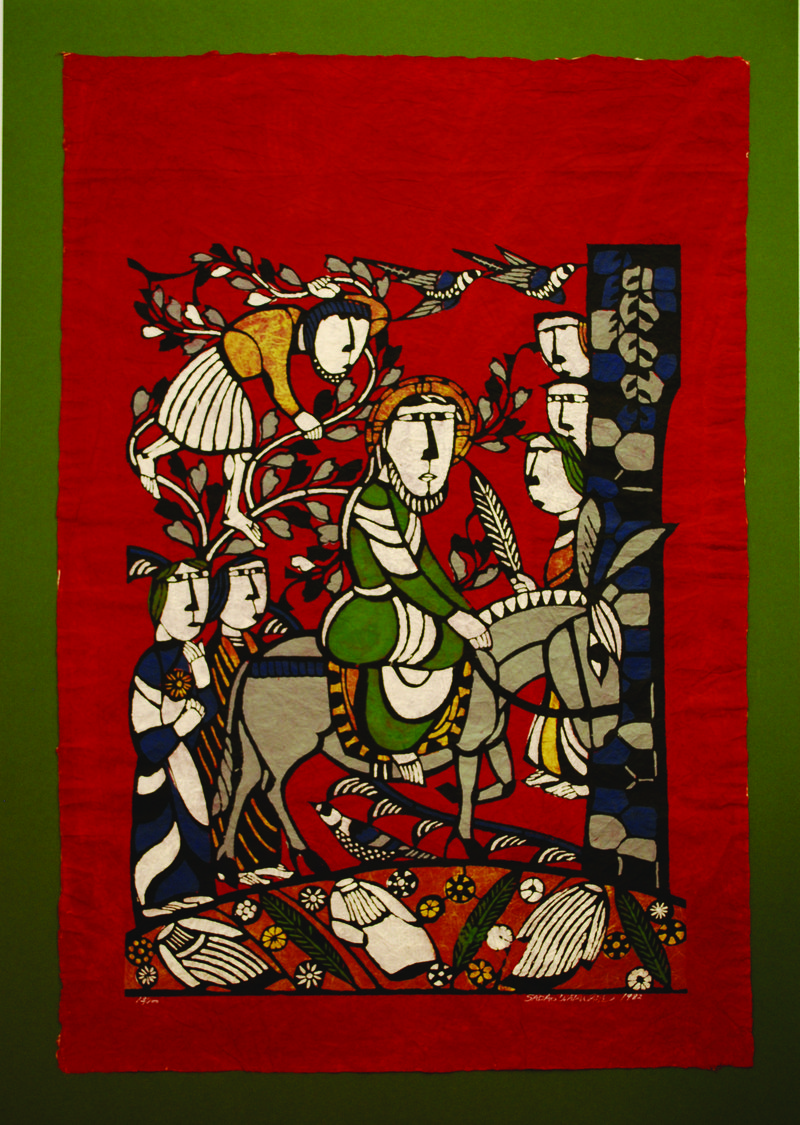
Sadao Watanabe (1913-1996)
Stencil: natural pigments and ink on paper
99 x 67 cm
1982
Methodist Modern Art Collection
No. WAT/2010/1
Image Copyright © Trustees for Methodist Church Purposes. The Methodist Church Registered Charity no. 1132208
Biblical commentary
John 12: 12–15
In this print, most of the important elements of the Biblical tradition are present, although the onlookers are phlegmatic rather than enthusiastic. Jesus, largely in green, is at the centre riding the donkey over ground covered with palm branches, discarded robes and flower heads. Up in a spindly tree, is a figure who may be Zacchaeus, who climbed a tree to see Jesus. Luke records this at Jericho, but it is often included in the Entry into Jerusalem.
Watanabe’s work is executed in a traditional Japanese medium, and his Biblical themes are depicted in a Japanese setting. He liked his prints to hang in ordinary places where people gather, “because it was to them that Jesus brought the gospel”. This is a characteristic of mingei: art for the people and by the people.
Commentary based on A Guide to the Methodist Art Collection.